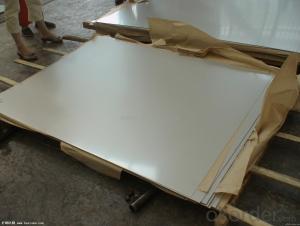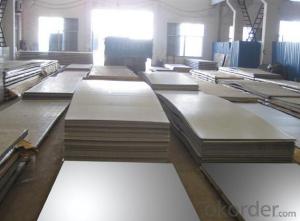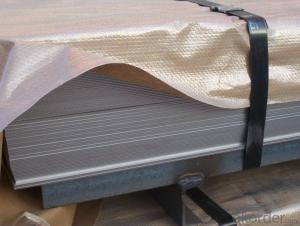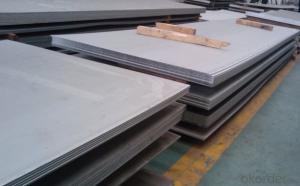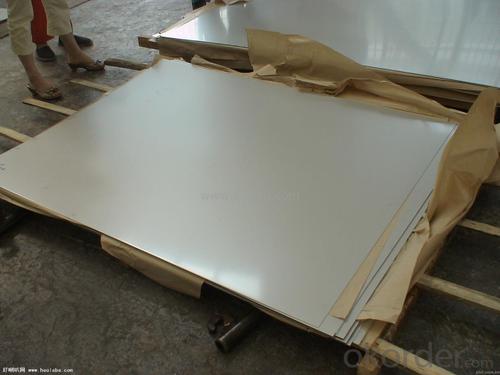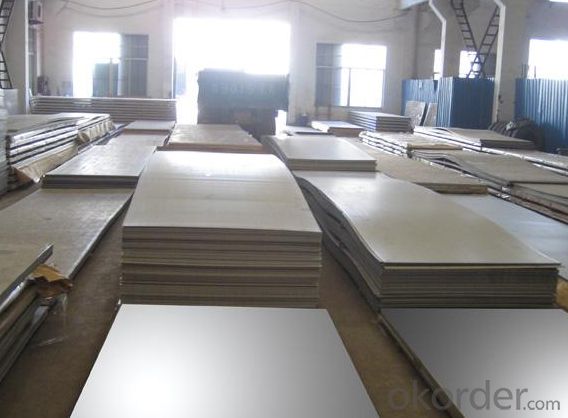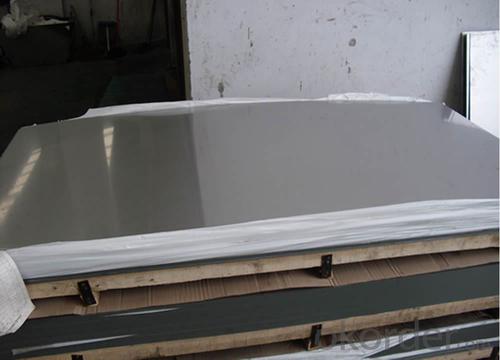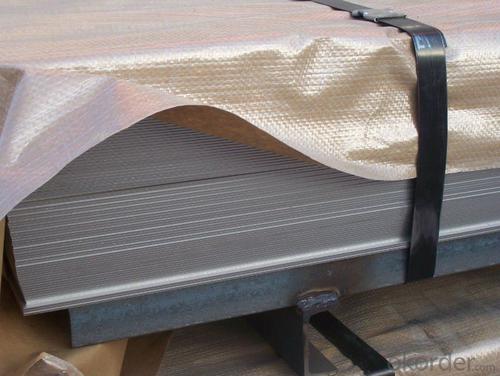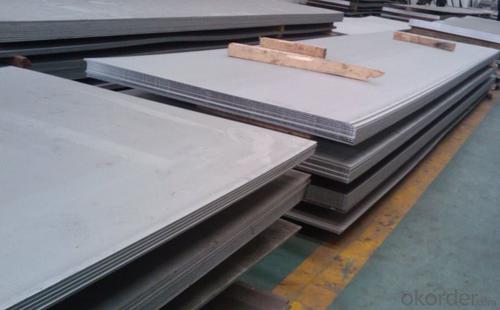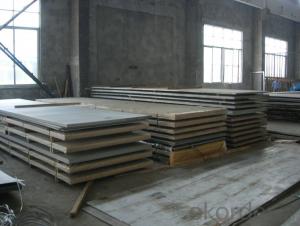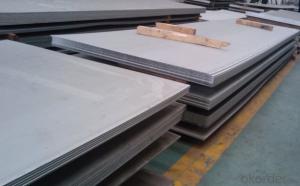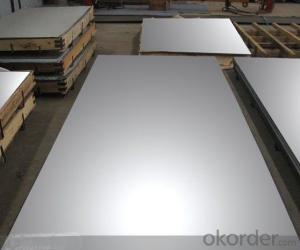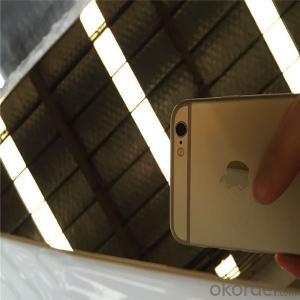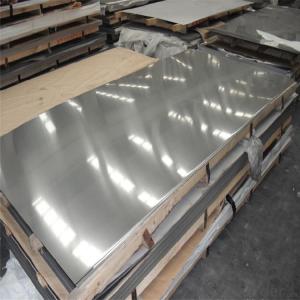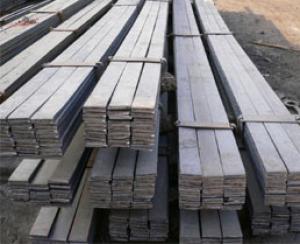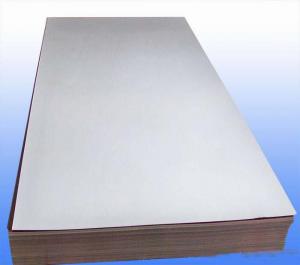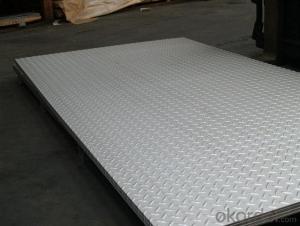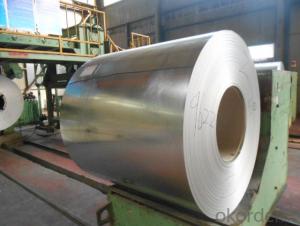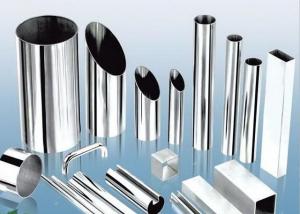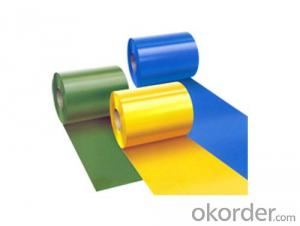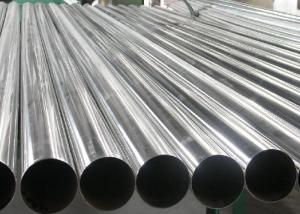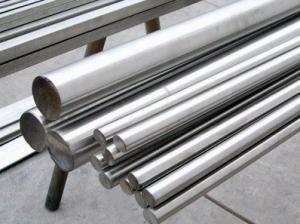Stainless Steel 316 sheet and plate with low MOQ
- Loading Port:
- Shanghai
- Payment Terms:
- TT or LC
- Min Order Qty:
- 1000 m.t
- Supply Capability:
- 1000000 m.t/month
OKorder Service Pledge
OKorder Financial Service
You Might Also Like
Stainless Steel 316 sheet and plate with low MOQ
Description of Stainless Steel 316 sheet and plate with low MOQ:
Stainless steel is a production which not easy rust,acid resistance and corrosion resistance,so it is widelyused in light industry,heavy industry,daily necessities and the decoration industry.my company long-termsupply stainless steel porducts including:stainless steel sheet,stainless steel coil and stainless steel tube.
Main Features of Stainless Steel 316 sheet and plate with low MOQ:
•Escalator, Elevator, Doors
•Furniture
•Production tools, Kitchen appliances, freezers, cold rooms
•Auto Parts
•Machinery and Packaging
•Equipment and Medical devices
•Transport system
Maintance of Stainless Steel 316 sheet and plate with low MOQ:
(1) Regular cleaning and maintenance
(2) Pay attention to prevent the occurrence of the phenomenon of surface scratches
(3) Use soap, weak detergent or warm water to remove surface dust, dirt
(4) In addition to the surface of the binder with alcohol or an organic solvent (ether, benzene)
(5) Use neutral detergent or ammonia solution in addition to surface oil
(6) With 10% nitric acid or abrasive detergent in addition to the surface of the embroider caused by the dirt.
Applications of Stainless Steel 316 sheet and plate with low MOQ:
Stainless steel’s resistance to corrosion and staining, low maintenance and familiar lustre make it an ideal material for many applications. There are over 150 grades of stainless steel, of which fifteen are most commonly used. The alloy is milled into coils, sheets, plates, bars, wire, and tubing to be used in cookware, cutlery, household hardware, surgical instruments, major appliances, industrial equipment Storage tanks and tankers used to transport orange juice and other food are often made of stainless steel, because of its corrosion resistance and antibacterial properties. This also influences its use in commercial kitchens and food processing plants, as it can be steamcleaned and sterilized and does not need paint or other surface finishes..
Specifications of Stainless Steel 316 sheet and plate with low MOQ:
Description | steel sheet,hot rolled steel sheet,cold rolled steel sheet, steel sheet,sheet,steel plate |
Standard | ASME, ASTM, EN ,BS,GB,DIN, JIS etc |
Application | Steel sheet applies to construction field, ships building industry, petroleum & chemical industries, war and electricity industries, food processing and medical industry, boiler heat exchanger, machinery and hardware fields. |
Packaging | Standard export sea-worthy packing |
Delivery time | 10-30 days |
Quality | No.1 |
Productivity | 500 tons/Day |
Note | Our company has cooperative relation between the domestic agents. Stainless steel sheet can be made accordingto the customers requirements. Fasten delivery. Quality assured. |
Contacts | If you have any question,please feel free contact me. |
Surface Finish Characteristics of Stainless Steel 316 sheet and plate with low MOQ:
| Surface finish | Characteristics and application |
| 2B | The surface brightness and flatness of no2B is better than no2D. then through a special surface treatment to improve its mechanical properties,No2B could nearly satisfy comprehensive uses. |
| No.1 | Polished with abrasive belt of grit#100-#200, have better brightness with discontinuous coarse stria, used as inner and external ornaments for building, electrical appliances and kitchen utensils etc. |
| No.4 | Polished with abrasive belt of grit #150-#180,have better brightness with discontinuous coarse stria, but thinner than No3, are used as bathtub buildings inner and external ornaments electrical appliances kitchen utensils and food processing equipment etc. |
| HL | Polished with abrasive belt of grit #150-#320 on the NO.4 finish and has continuous streaks, mainly used as buildings ornaments elevators, door of building, frontal plate etc. |
| BA | Cold rolled, bright annealed and skin-passed, the product have excellent brightness and good reflexivity like mirror, kitchen apparatus, ornament etc. |
| 8K | The product have excellent brightness and prefer reflexivity can to be the mirror. |
Images of Stainless Steel 316 sheet and plate with low MOQ:
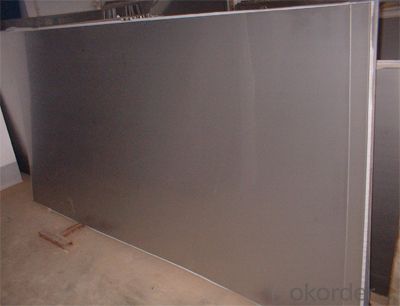

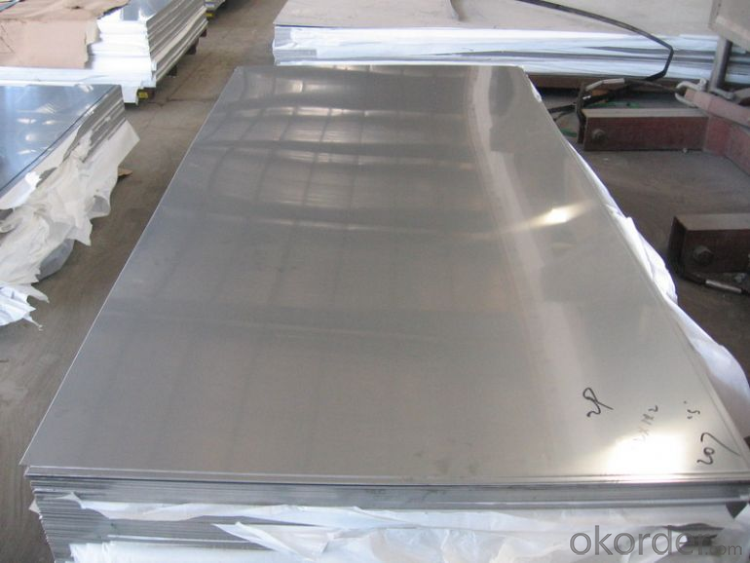
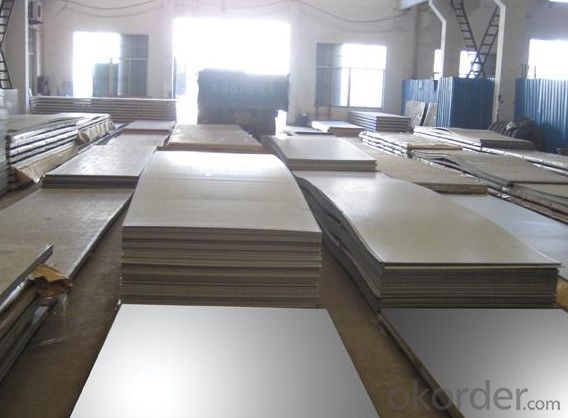
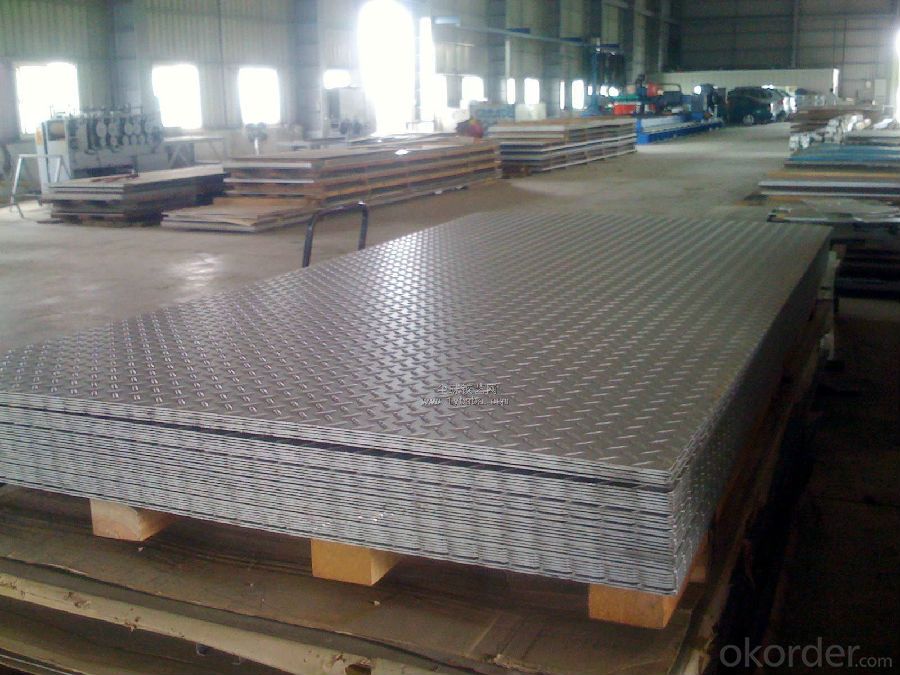
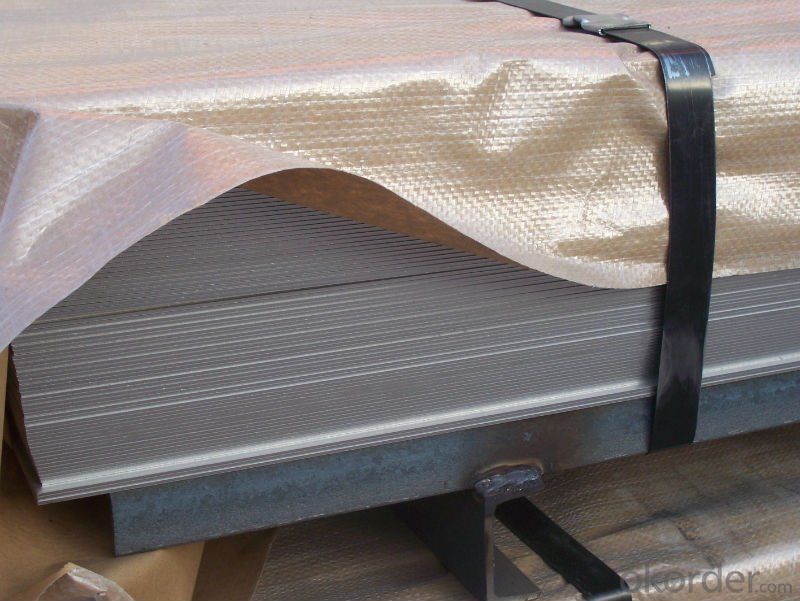
Sandard Seaworth Packing(wooden packing with water proof paper):
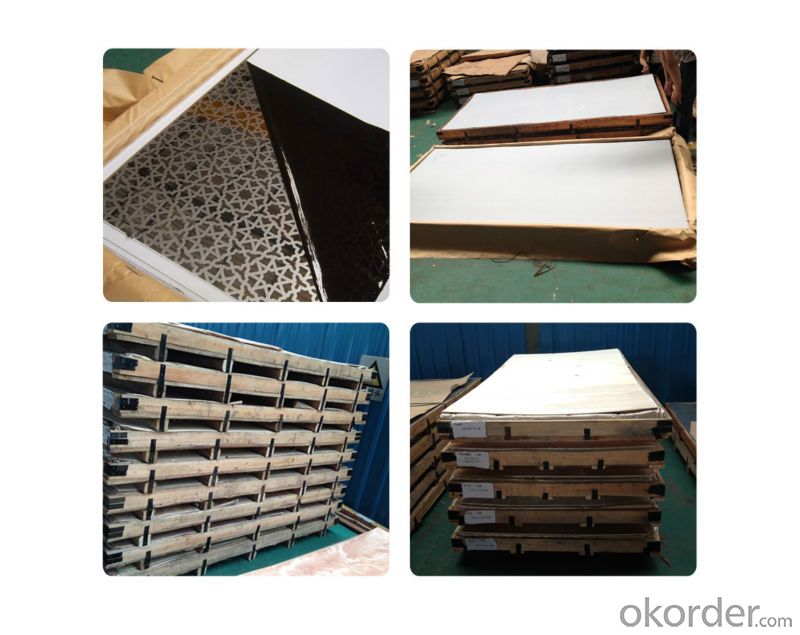
FAQ:
1. What are we supplying?
We are specialized in producing stainless steel coil, stainless steel (plate/sheet), and duplex stainless steel for a prelonged period. We are currently supplying grade of steel of 201/202,304/304L, 310S/309S/316L/316Ti/321, 410/420/430/443/444/409L, and 904L.
2. How Many years experience do we have?
We have been exported to more than 20 countries in the past 15 years.
3. How long do we usually reply your request?
We always reply our customer within 24 hours.
Our company adheres to the tenet of "survival by quality, build brand by reputation, win market by prices and innovate to develop", has developed international markets and the products are well sold in many countries as Singapore, Indonesia, South Korea, Dubai, Pakistan, Sri Lanka, Vietnam, Iran, Malaysia, Mexico, Chile, Brazil, Holland, Italy, Belgium, Russia, Moldova, Paraguay, Uruguay, Germany, Spain, USA etc. More than 40 countries.; commonly we have more than 500tons stainless steel materials in stock; so w can arrange the soonest delivery too; also we hope we will have chance to cooperate with your esteemed company!
- Q: How do you prevent warping or distortion in stainless steel sheets?
- To prevent warping or distortion in stainless steel sheets, several measures can be taken. First, it is important to properly handle and store the sheets to prevent any bending or twisting during transportation or storage. Secondly, ensuring a smooth and even distribution of heat during welding or fabrication processes can help minimize the chances of warping. Additionally, using proper clamping techniques and supports during machining or cutting operations can help maintain the shape and integrity of the stainless steel sheets. Lastly, adhering to the recommended thicknesses and specifications provided by the manufacturer for specific applications can also help prevent warping or distortion in stainless steel sheets.
- Q: Are stainless steel sheets suitable for wastewater treatment plants?
- Yes, stainless steel sheets are suitable for wastewater treatment plants. Stainless steel is known for its corrosion resistance, making it an excellent choice for environments with high moisture and chemical exposure, such as wastewater treatment plants. It can withstand the harsh conditions and provide long-lasting durability. Additionally, stainless steel is easy to clean and maintain, which is essential in a wastewater treatment facility where cleanliness and hygiene are critical. The material also has a high strength-to-weight ratio, making it suitable for various applications within the plant, such as tanks, piping, and equipment. Overall, stainless steel sheets are a reliable and practical choice for wastewater treatment plants.
- Q: What is the hardness of stainless steel sheets?
- The hardness of stainless steel sheets can vary depending on the specific grade and manufacturing process. Generally, stainless steel sheets are known for their high hardness and strength. The most common grades used in industrial applications, such as 304 and 316, have a hardness range of 70-90 HRB (Rockwell hardness B scale) or 150-200 HV (Vickers hardness). However, there are also specialized stainless steel alloys that can have even higher hardness values, such as precipitation-hardened grades like 17-4 PH, which can reach hardness levels of 30-40 HRC (Rockwell hardness C scale). To determine the exact hardness of a specific stainless steel sheet, it is necessary to consult the manufacturer's specifications or perform hardness testing using appropriate methods and equipment.
- Q: Can stainless steel sheets be used for automotive exhaust systems?
- Yes, stainless steel sheets can be used for automotive exhaust systems. Stainless steel is a popular choice for exhaust systems due to its high heat resistance, corrosion resistance, and durability. It can withstand the high temperatures and corrosive gases produced by the exhaust, making it a suitable material for this application.
- Q: Are stainless steel sheets non-magnetic?
- Stainless steel sheets are not inherently non-magnetic, contrary to popular belief. Although there are varieties of stainless steel, like austenitic grades such as 304 and 316, that are non-magnetic, there are many other types that can possess magnetic properties. It is worth noting that ferritic and martensitic stainless steels, in particular, tend to exhibit magnetism. The presence or absence of magnetism in stainless steel is determined by its composition and crystal structure. Therefore, if your requirement is specifically for non-magnetic stainless steel sheets, it is advisable to choose the austenitic grades.
- Q: How do I prevent fingerprints or smudges on stainless steel sheets?
- To prevent fingerprints or smudges on stainless steel sheets, you can try using a microfiber cloth or a soft cotton cloth to wipe the surface regularly. Avoid using abrasive cleaners or scrub brushes that can cause scratches. Additionally, you can use a stainless steel cleaner or a mixture of water and mild dish soap for deeper cleaning.
- Q: What are the benefits of using laser-cut stainless steel sheets?
- There are several benefits of using laser-cut stainless steel sheets: 1. Precision and accuracy: Laser cutting offers high precision and accuracy, resulting in clean and precise cuts on stainless steel sheets. This ensures that the desired design or shape is achieved with minimal errors or imperfections. 2. Versatility: Laser cutting technology allows for the cutting of intricate and complex designs on stainless steel sheets. This versatility makes it suitable for a wide range of applications, including architectural, industrial, automotive, and decorative purposes. 3. Time and cost efficiency: Laser cutting stainless steel sheets is a relatively quick and efficient process. It requires less setup time and can be automated, reducing labor costs and increasing productivity. Additionally, laser cutting eliminates the need for additional finishing processes, saving both time and money. 4. Clean and smooth edges: Laser cutting provides clean and smooth edges on stainless steel sheets, eliminating the need for additional filing or grinding. This results in a high-quality finish, enhancing the overall aesthetics of the final product. 5. Minimal material wastage: Laser cutting is a non-contact process, which means there is no physical force applied to the stainless steel sheets. This results in minimal material wastage, as the laser beam precisely cuts through the targeted areas without damaging the surrounding material. 6. Reduced risk of distortion: Traditional cutting methods, such as plasma cutting or shearing, can cause distortion or warping of the stainless steel sheets. Laser cutting, on the other hand, produces minimal heat-affected zones, reducing the risk of distortion and ensuring dimensional accuracy. 7. Enhanced design possibilities: Laser cutting enables the creation of intricate designs and patterns on stainless steel sheets that may not be possible with other cutting methods. This opens up a world of design possibilities, allowing for unique and visually appealing products. Overall, the benefits of using laser-cut stainless steel sheets include precision, versatility, time and cost efficiency, clean edges, minimal material wastage, reduced risk of distortion, and enhanced design possibilities. These advantages make laser cutting an attractive choice for various industries and applications.
- Q: Are stainless steel sheets good for heat exchanger tubes?
- Stainless steel sheets are widely employed as heat exchanger tubes owing to their remarkable heat transfer capabilities and resistance to corrosion. The thermal conductivity of stainless steel is notably high, enabling efficient heat transfer between fluids. Moreover, its exceptional resistance to corrosion is vital for heat exchangers that frequently encounter corrosive liquids or gases. The longevity and reliability of stainless steel sheets guarantee the durability of heat exchanger tubes, making them a favored option in diverse industries like chemical processing, power generation, and HVAC systems.
- Q: How is stainless steel different from other types of steel?
- Stainless steel is a type of steel that is different from other types of steel primarily due to its composition and unique properties. It contains a minimum of 10.5% chromium, which forms a thin and invisible layer of chromium oxide on the surface of the steel. This layer is highly resistant to corrosion, making stainless steel highly durable and long-lasting. Unlike other types of steel, stainless steel does not easily rust, stain, or corrode when exposed to moisture, air, or chemicals. This corrosion resistance makes it suitable for various applications where exposure to harsh environments is expected, such as in kitchen appliances, cutlery, medical equipment, and construction materials. Furthermore, stainless steel has excellent strength and durability, making it ideal for applications that require high structural integrity. It is also heat-resistant, maintaining its strength and shape even at elevated temperatures. This property makes stainless steel widely used in industries like automotive, aerospace, and construction. Moreover, stainless steel is highly hygienic due to its non-porous surface and resistance to bacterial growth. It is easy to clean and maintain, making it a popular choice for food processing equipment, medical instruments, and sanitary applications. In summary, stainless steel stands out from other types of steel due to its corrosion resistance, strength, heat resistance, and hygienic properties. These qualities make it a versatile material used in various industries and applications, where durability, longevity, and resistance to external factors are crucial.
- Q: Are stainless steel sheets good for high-temperature applications?
- Yes, stainless steel sheets are excellent for high-temperature applications. Stainless steel has a high melting point, typically ranging from 1400 to 1450 degrees Celsius (2552 to 2642 degrees Fahrenheit), making it suitable for use in environments with elevated temperatures. Additionally, stainless steel exhibits excellent resistance to oxidation at high temperatures, which helps prevent the formation of scales or rust that can weaken the material. It also has good thermal conductivity, allowing for efficient heat transfer. These properties make stainless steel sheets a reliable choice for a wide range of high-temperature applications, including industrial furnaces, heat exchangers, boilers, and exhaust systems.
Send your message to us
Stainless Steel 316 sheet and plate with low MOQ
- Loading Port:
- Shanghai
- Payment Terms:
- TT or LC
- Min Order Qty:
- 1000 m.t
- Supply Capability:
- 1000000 m.t/month
OKorder Service Pledge
OKorder Financial Service
Similar products
Hot products
Hot Searches
Related keywords
